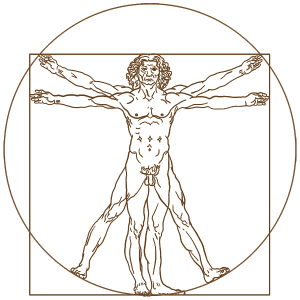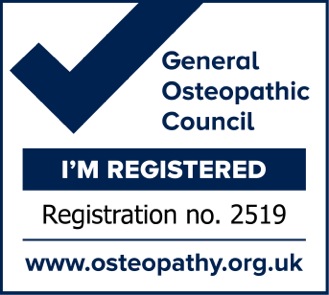What is Osteopathy?
Osteopathy is a physical therapy that is mainly used to treat bone, muscle, joint and back problems.
Below are some of the more common conditions that osteopaths treat:
- Back pain and neck pain
- Hip, knee, shoulder, elbow and other joint pains
- Arthritic and rheumatic pain
- Headache arising from the neck
- Circulatory and digestion problems
- Muscle spasms
- Sciatica, neuralgia and fibromyalgia,
- Inability to relax,
- Minor sports injuries and tensions
- General aches and pains

Osteopathy is concerned with the joints, bones and muscles of the body and their effect on the nervous system. Trained osteopaths look at the whole body and aim to diagnose and treat the cause of the problem not just the symptoms.
For your body to work well, its structure must also work well, and osteopathic treatment aims to restore your body to a state of balance. We use touch, physical manipulation, stretching and massage to increase the mobility of joints, relieve muscle tension, enhance the blood and nerve supply to tissues, and help your body’s own healing mechanisms.
We may also provide advice on posture, exercise and the ergonomics of work and everyday life to aid recovery, promote health and prevent symptoms recurring.
Is osteopathy a recognised medical practice?
The practice of osteopathy has a long history in the UK. In 1993, osteopathy became the first complementary therapy to be recognised by Parliament (in the Osteopaths Act), providing osteopathy with the same legal framework as that which regulates doctors and other health professionals.
By law, all osteopaths must be registered with the General Osteopathic Council . The Council regulates the profession and ensures that the interests of the public are protected through high standards of safety, competence and professional conduct.
To qualify, an osteopath must study for 4-5 years for an undergraduate degree; this is similar to a medical degree but with greater emphasis on anatomy and musculoskeletal medicine and includes more than 1,000 hours of training in osteopathic techniques.
What is the evidence that osteopathy works?
There is a growing volume of evidence of the effectiveness of ‘manual therapy’ used by osteopaths as well as physiotherapists.
The greatest amount of evidence is in the treatment of lower back pain, which is why both the NHS and UK health watchdog NICE (the National Institute for Health and Care Excellence) recommend osteopathy. They also recommend acupuncture for the treatment of low back pain. Click here for more information on this guidance .
NICE also recommends manual therapy as a possible treatment option for osteoarthritis. In some parts of the country, the NHS will pay for osteopathic treatment.
There is also some evidence that osteopathy is effective in conditions as varied as asthma, painful periods, glue ear, excessive crying in babes (colic), problems with the jaw and abnormal curvature of the spine (scoliosis).
This scientific evidence underpins the personal experiences of millions of patients who have been successfully treated with osteopathy. Read some of our patients stories and comments in our ‘What our patients say’ section.

